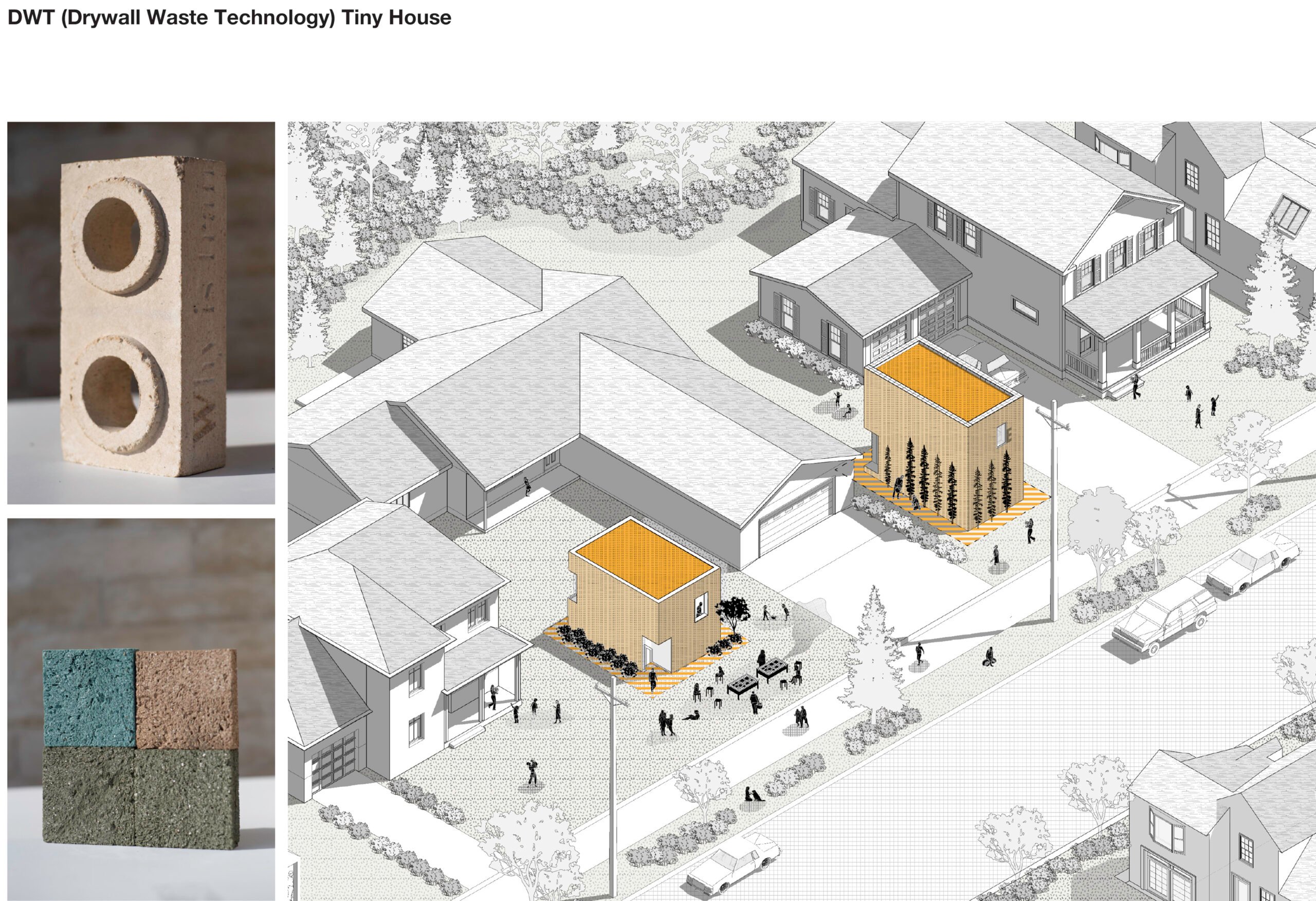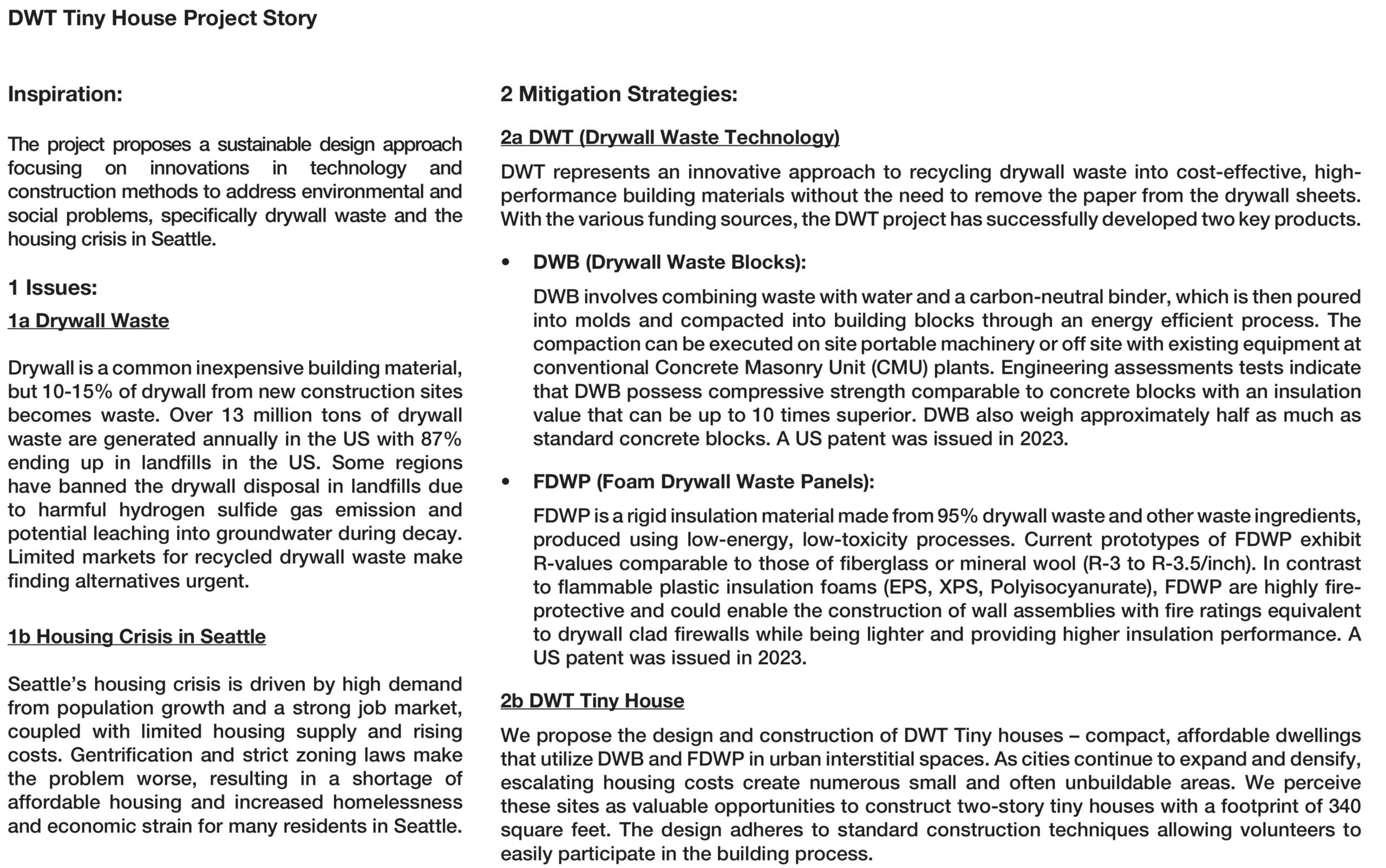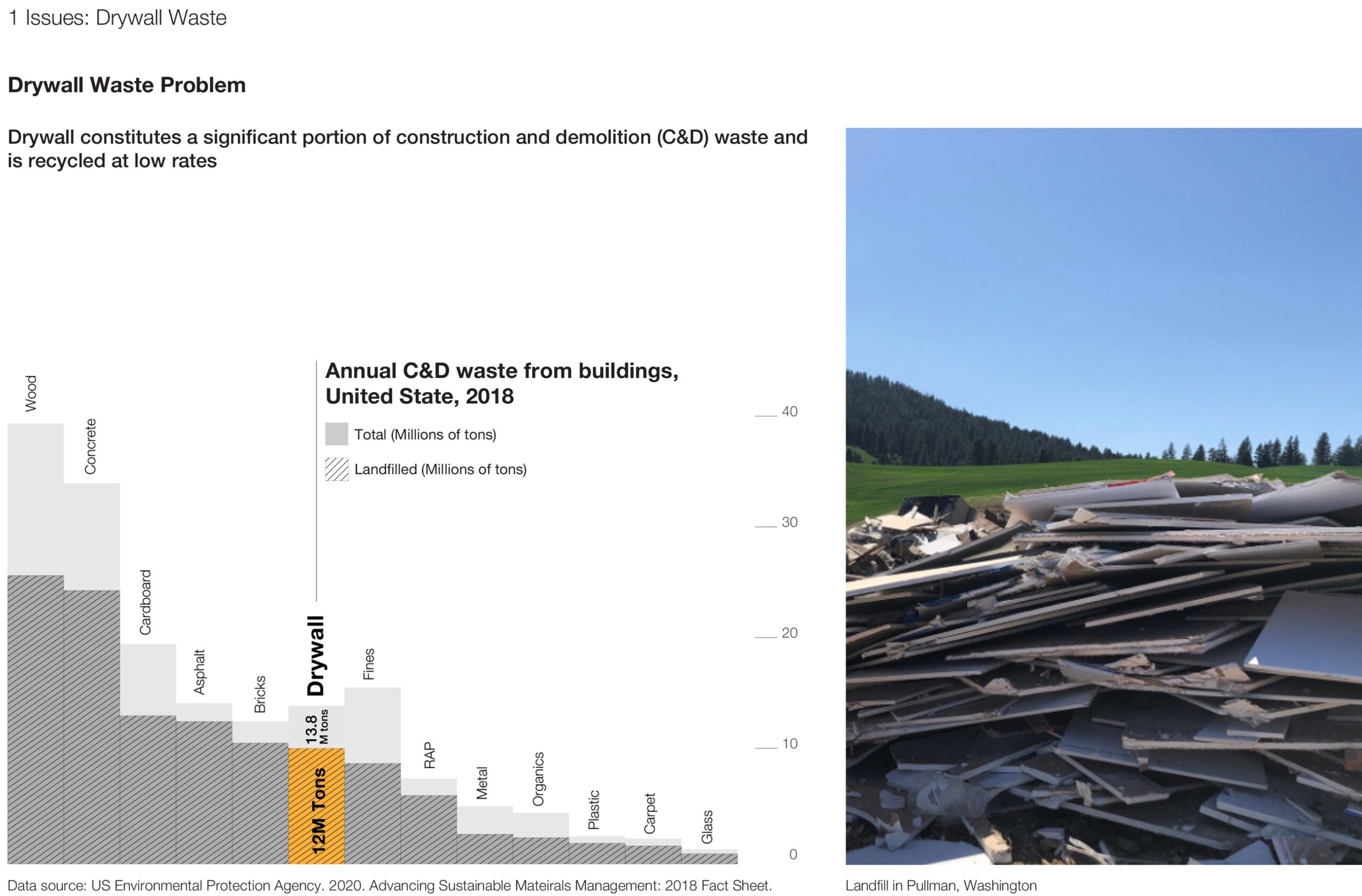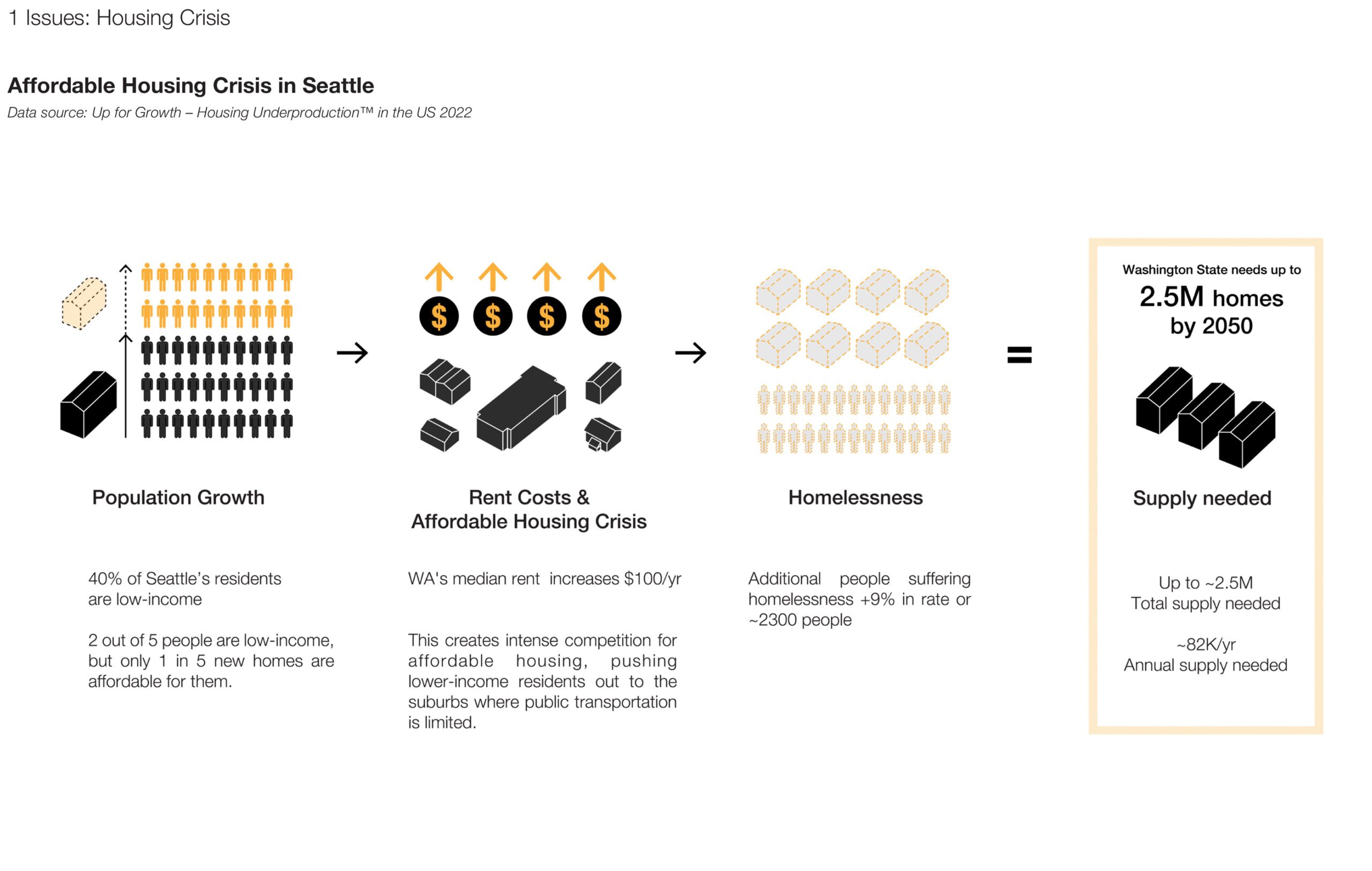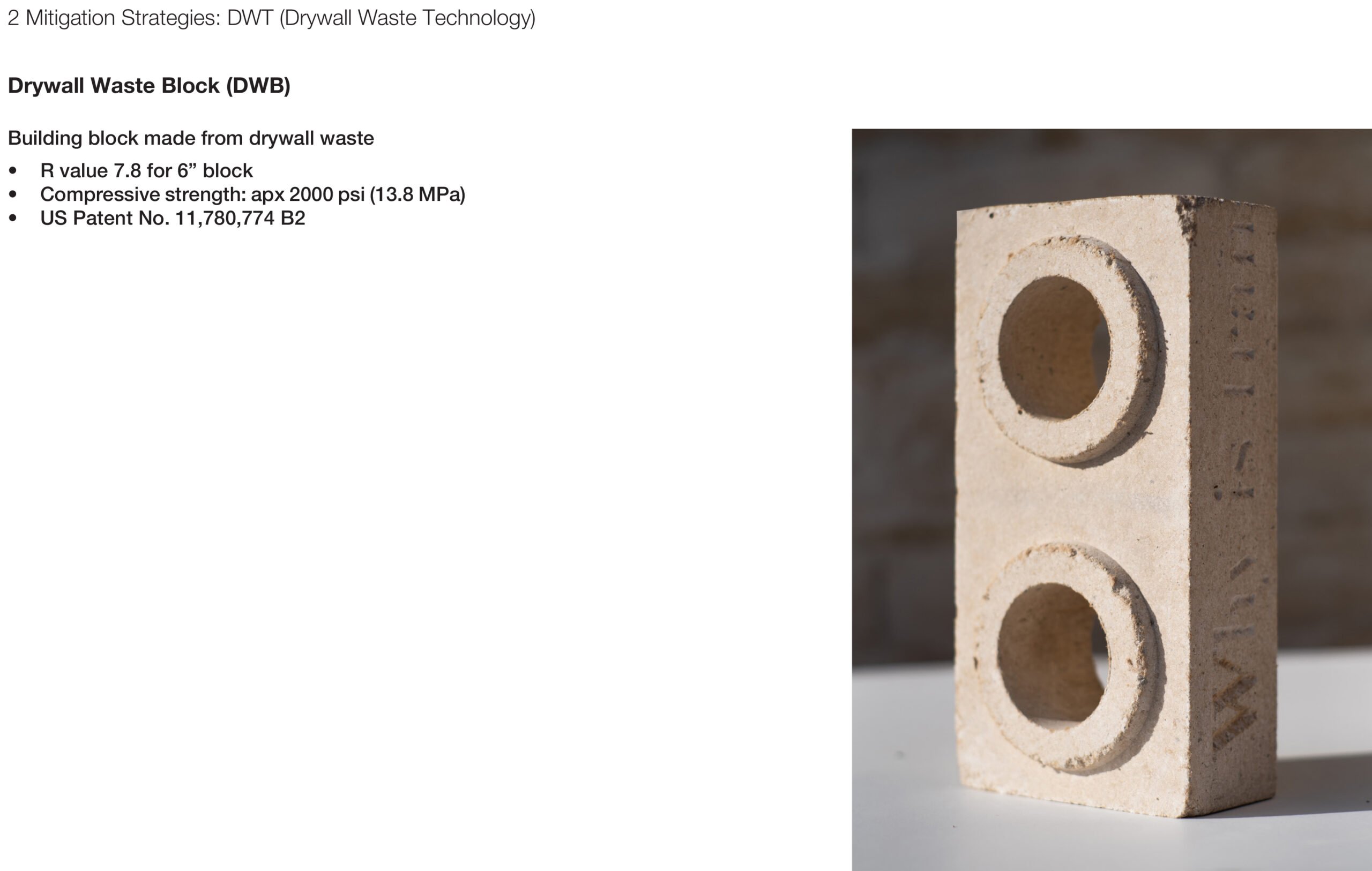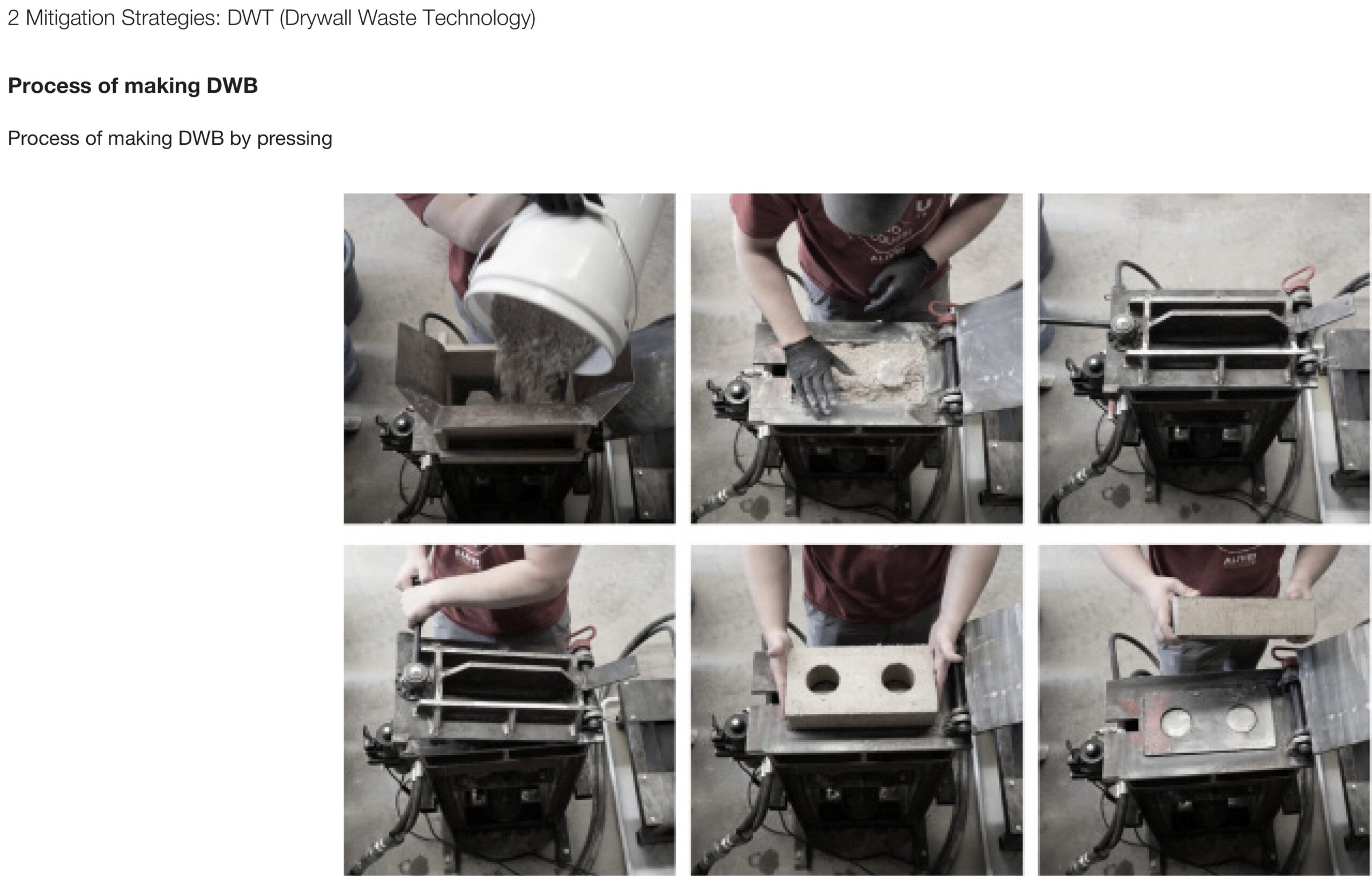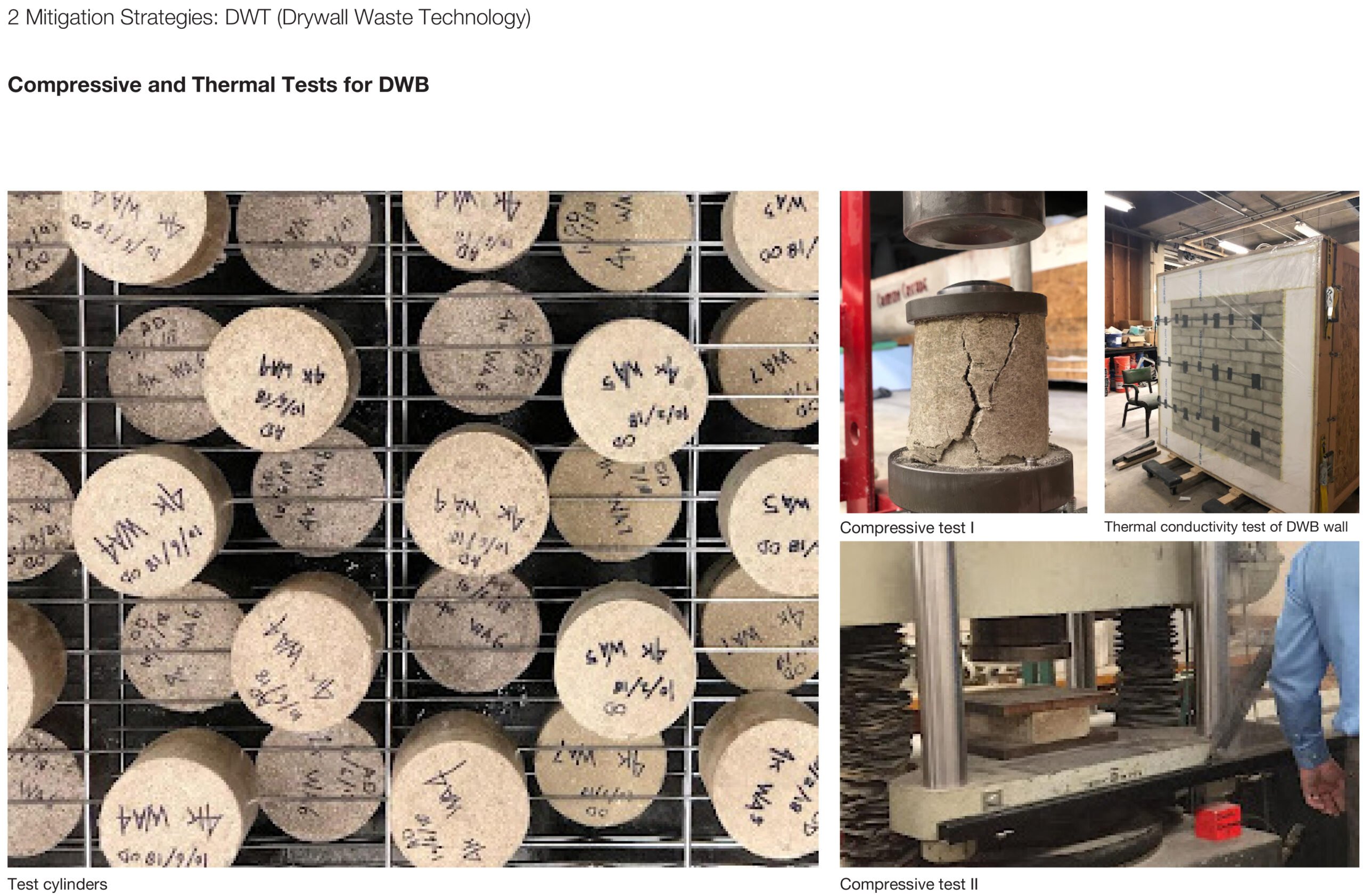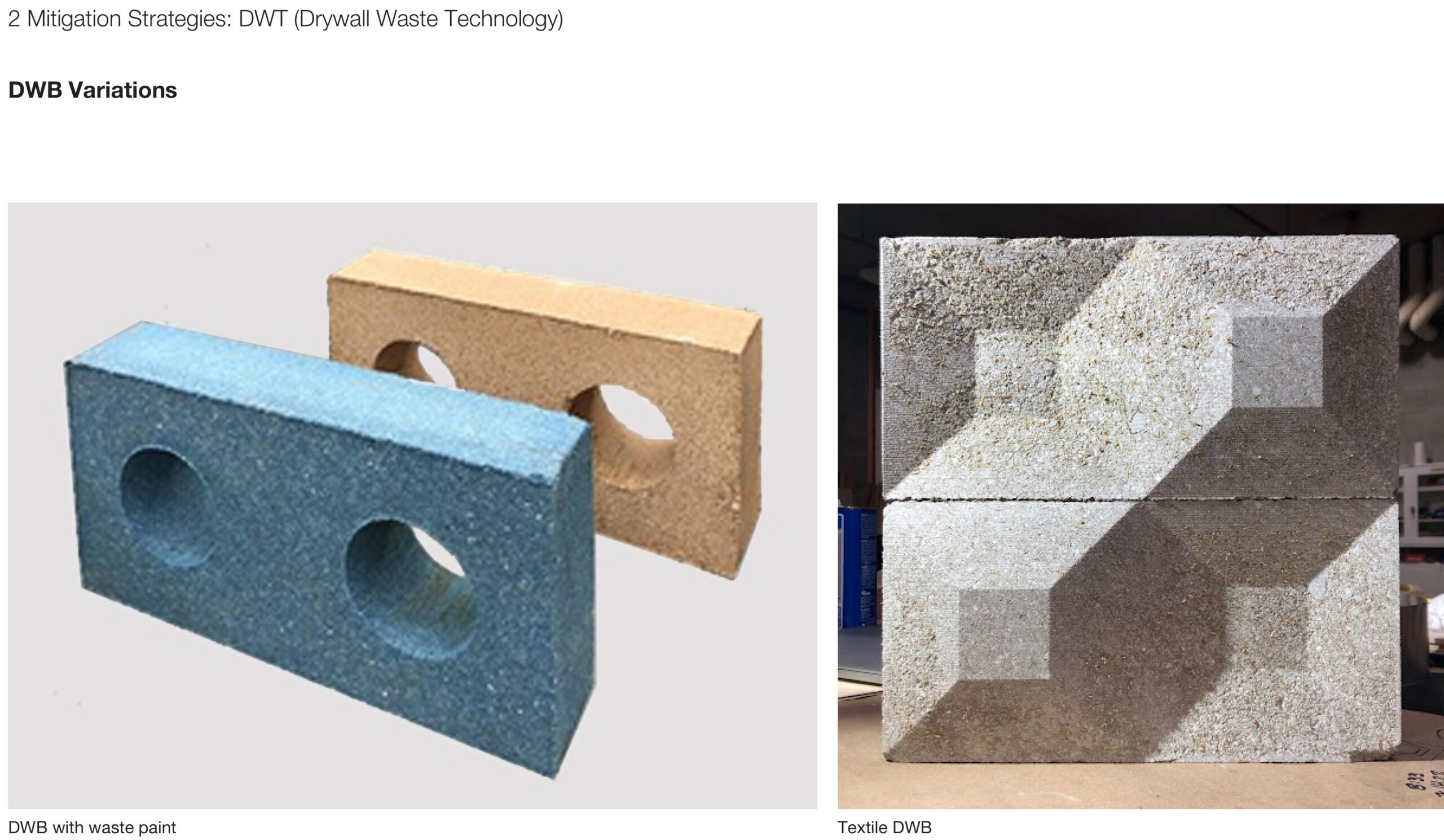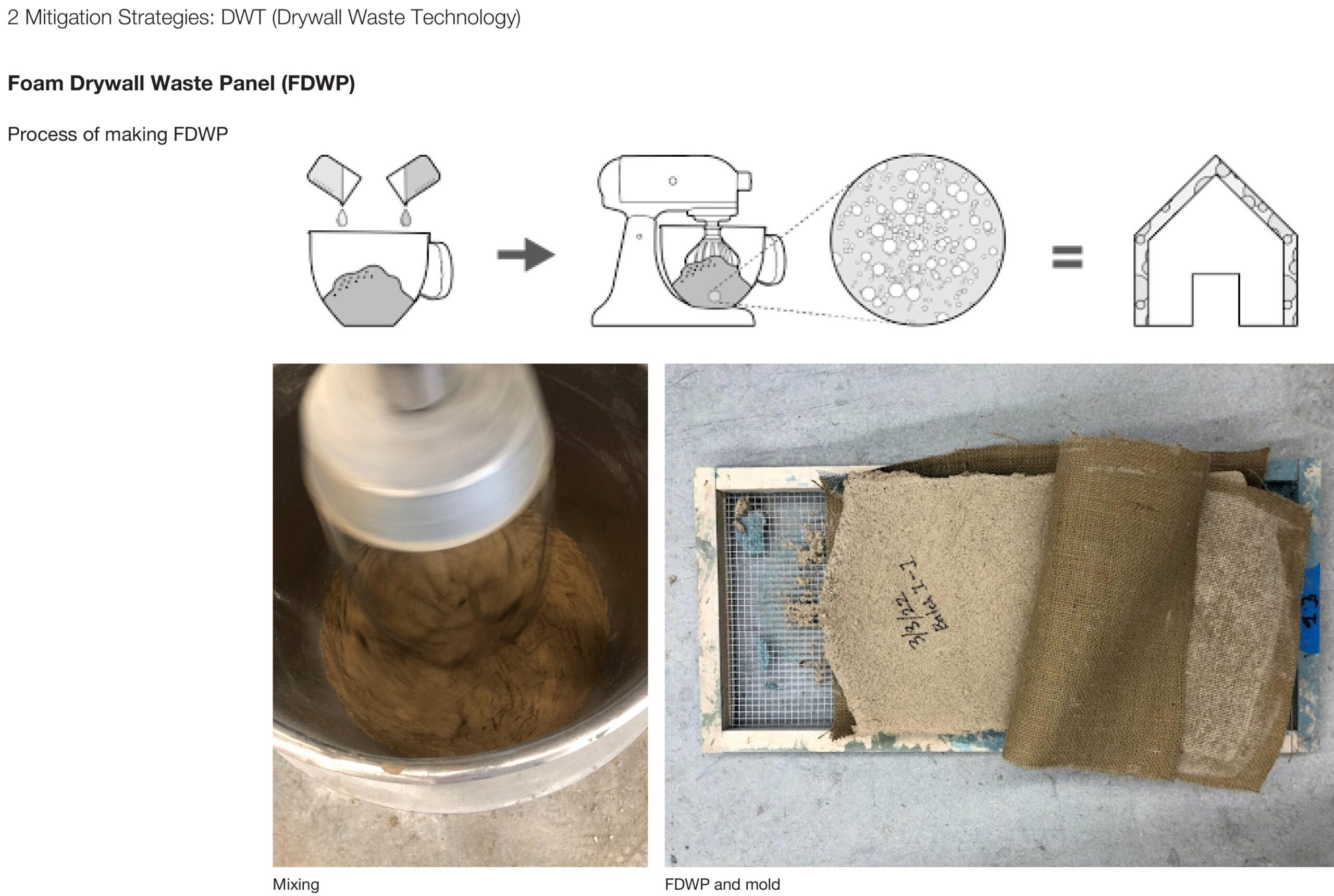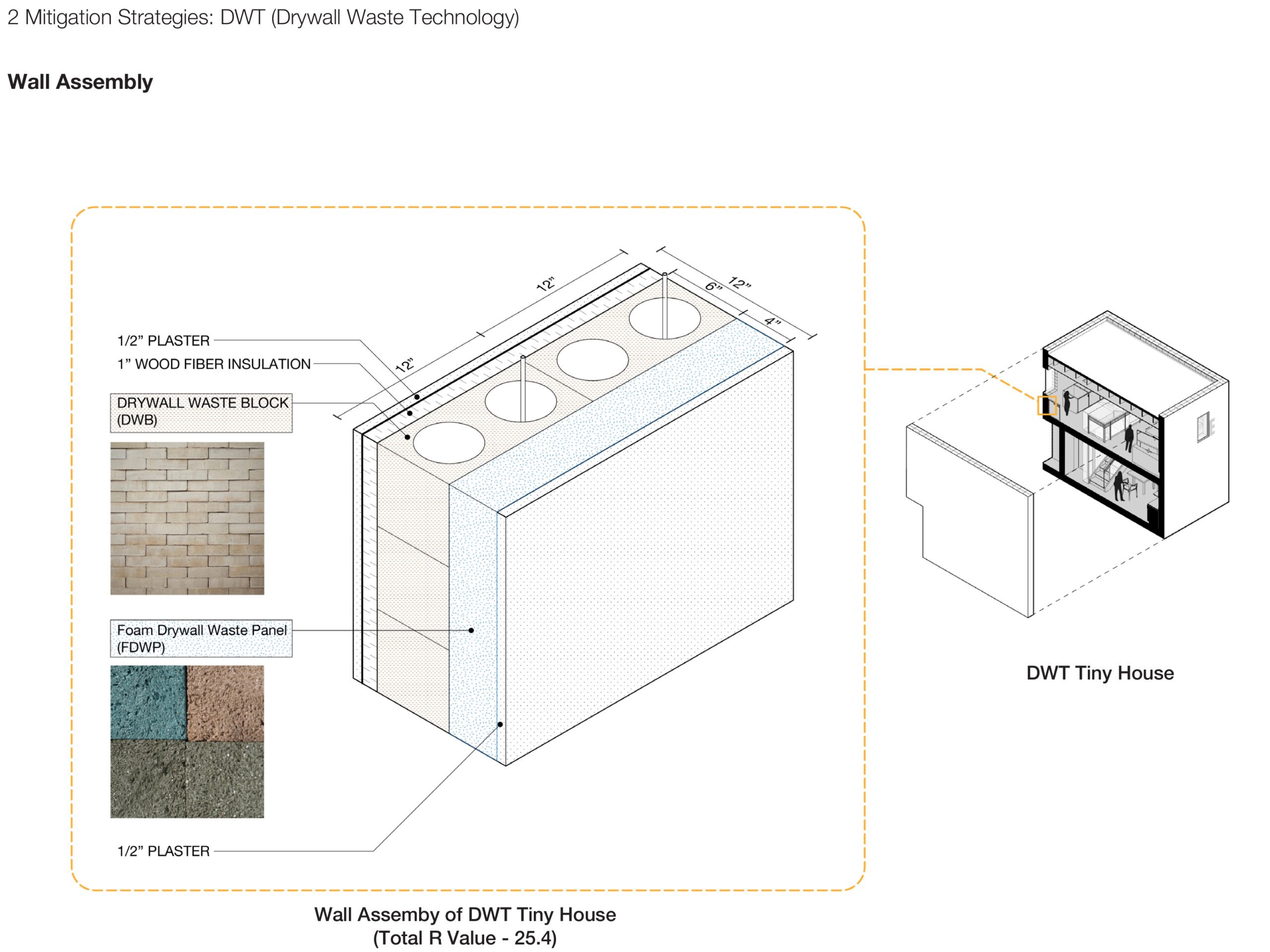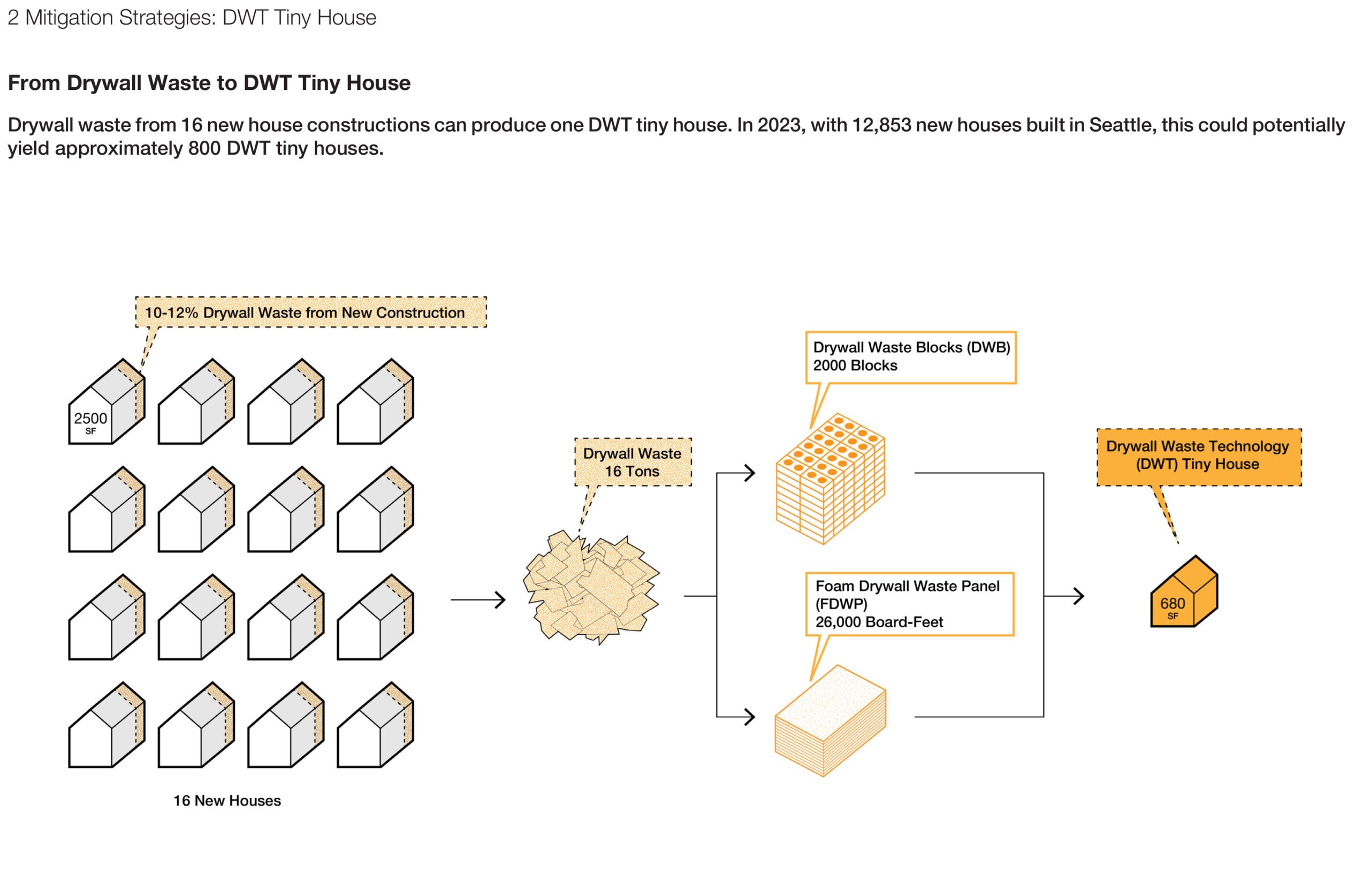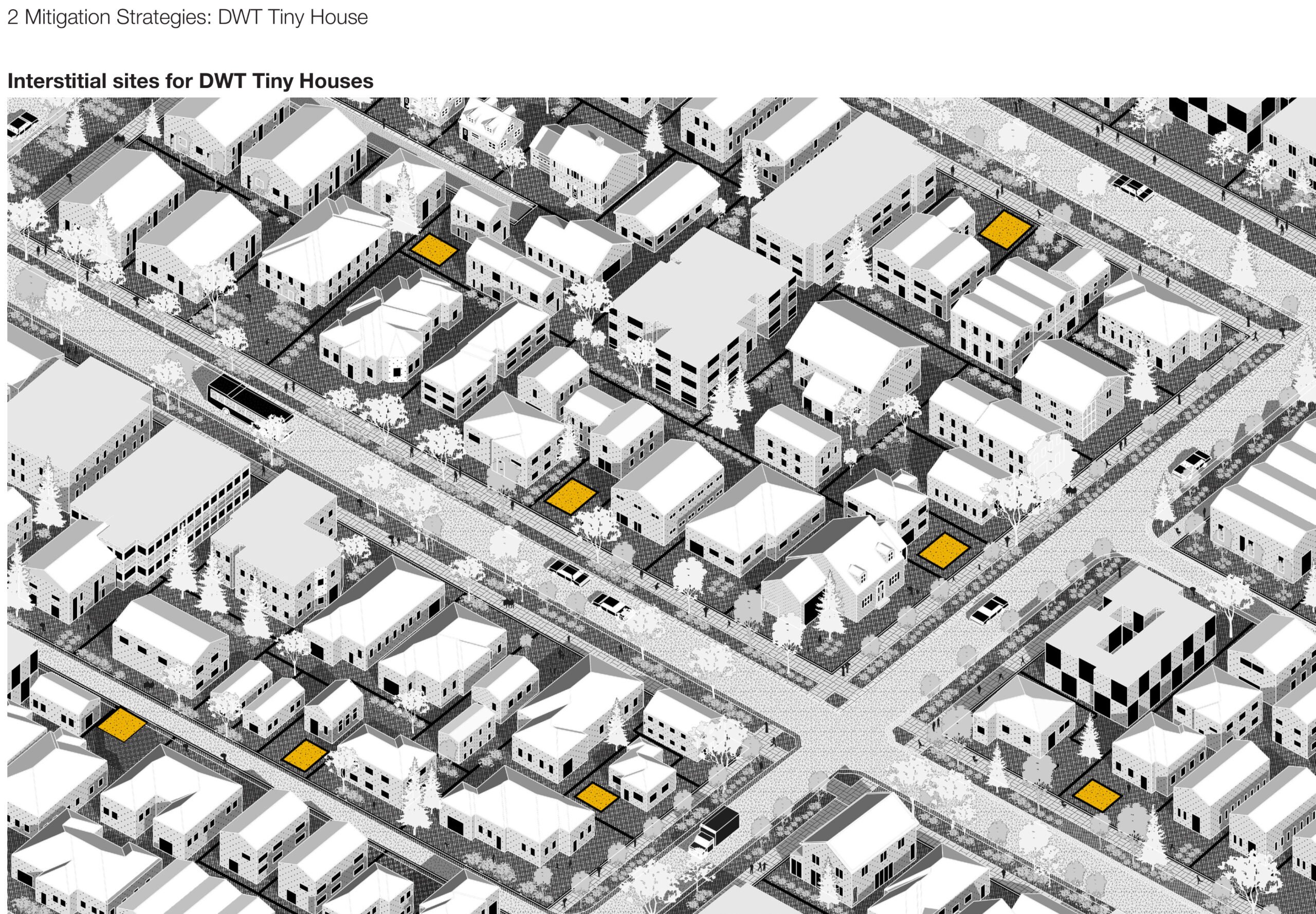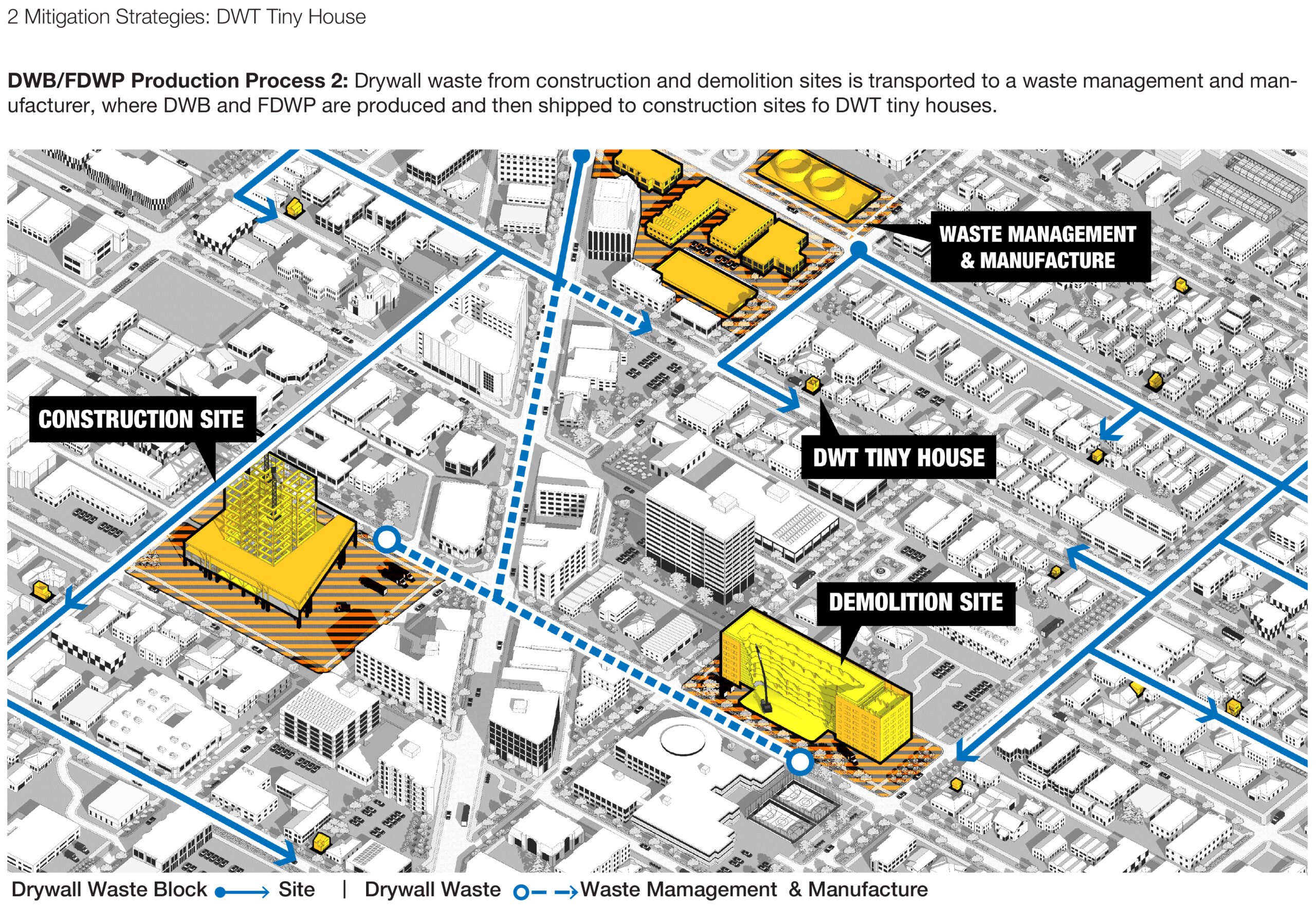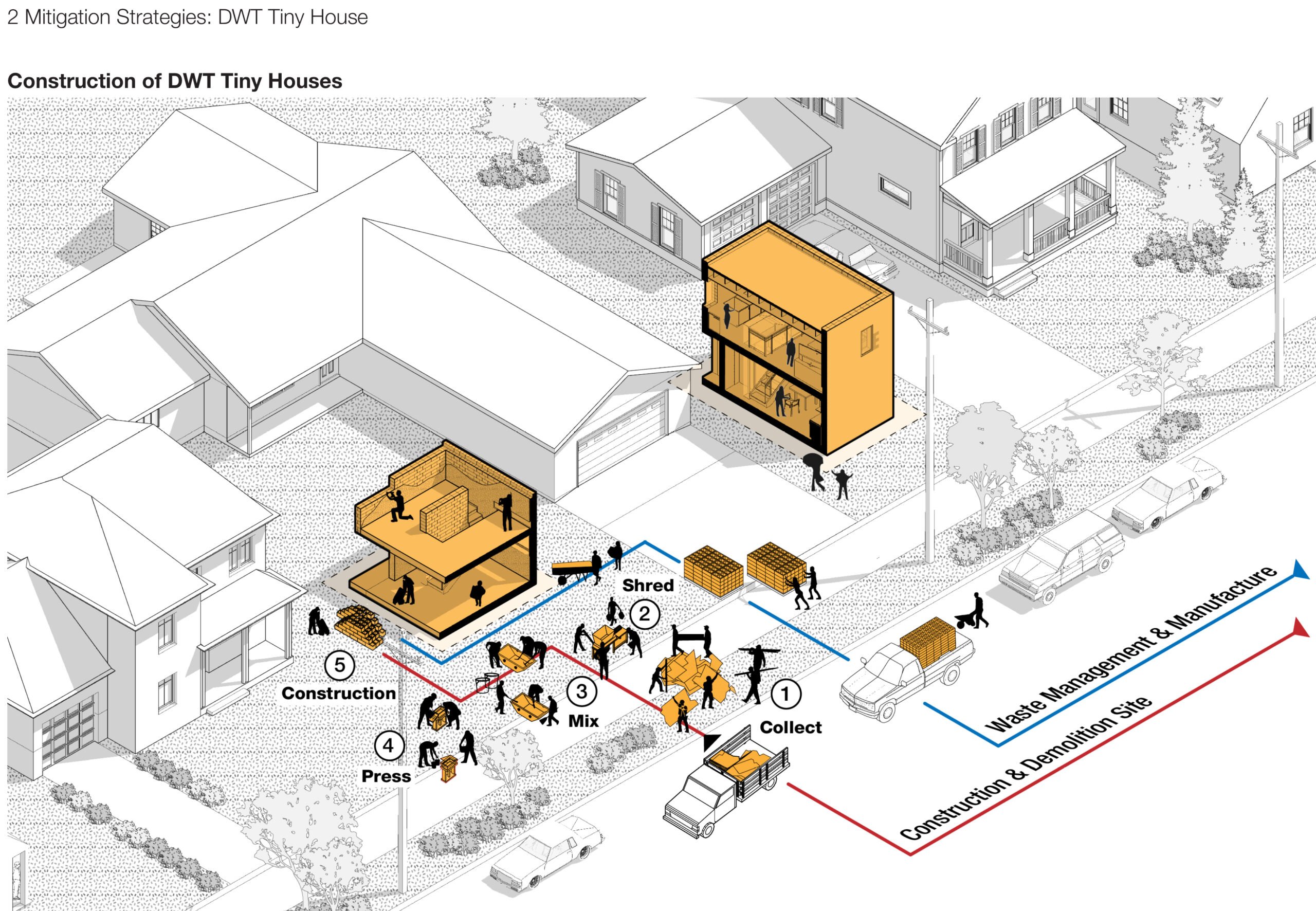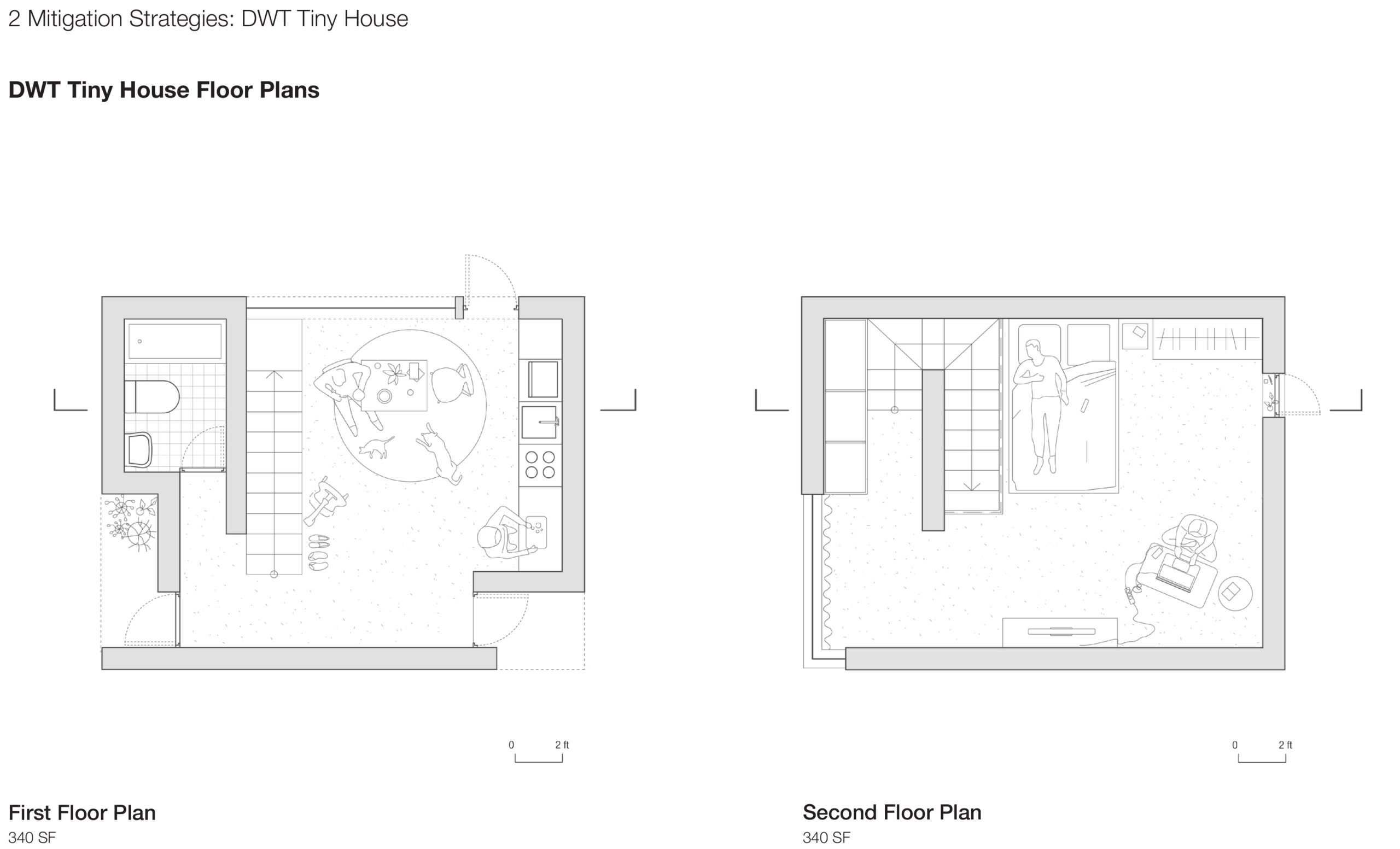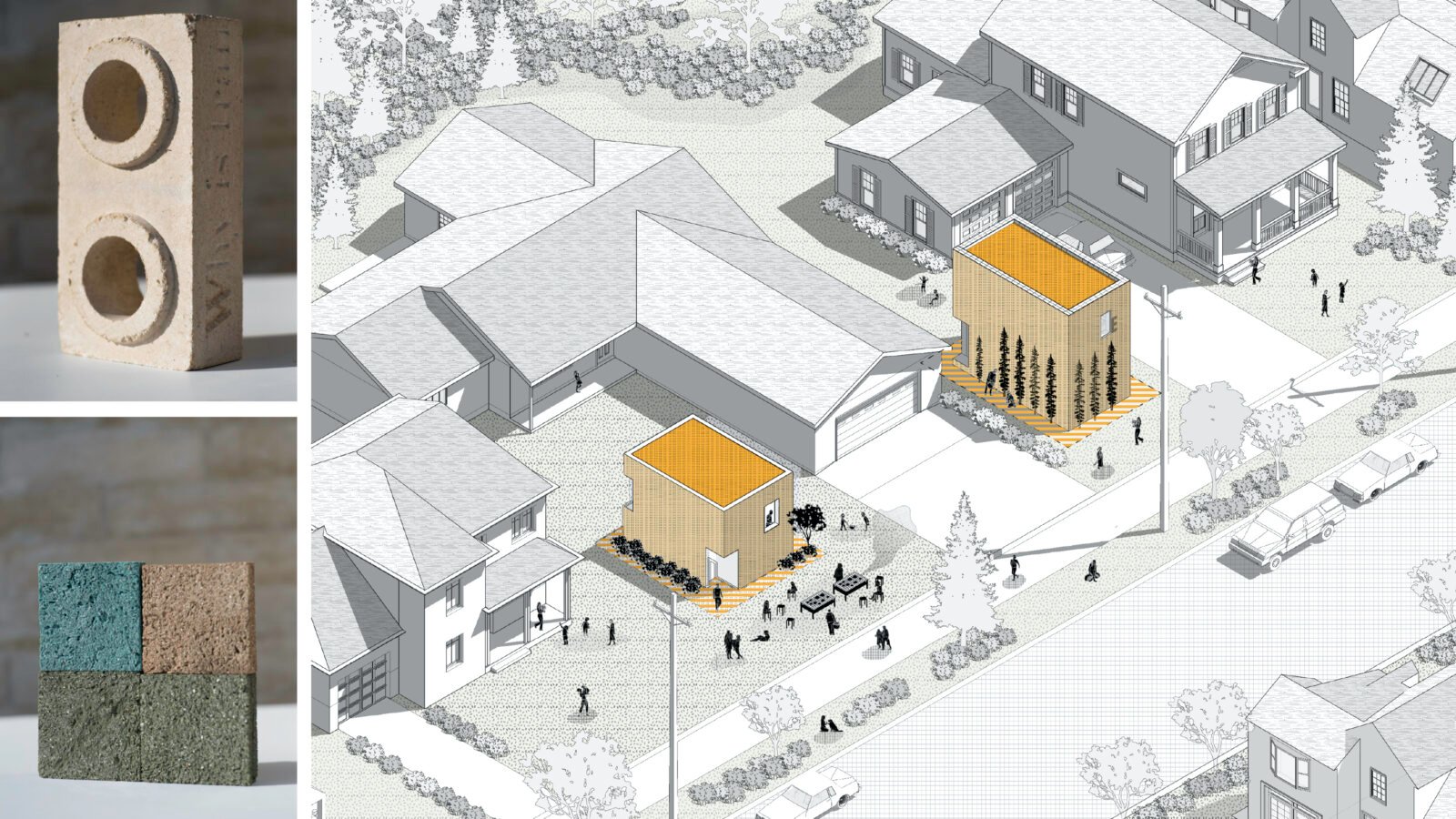
In the United States alone, a staggering 13 million tonnes of drywall ends up in landfill each year. As it decomposes, it emits harmful hydrogen sulfide gas that can leach into the groundwater; many regions have banned it from landfill disposal altogether. So, what to do with all this refuse? Enter Drywall Waste Technology (DWT), a game-changing innovation developed by a team at Washington State University that recycles leftover material into high performance building components, including insulation panels and masonry blocks that rival the compressive strength of concrete (both of which were patented in 2023).
Beyond devising material solutions, the researchers dove deeper to explore how they could be implemented to build affordable, two-storey tiny homes that seek to address Seattle’s housing crisis — which, as in many North American cities, only continues to escalate. The team even went so far as to imagine the supply chain that would make this endeavour possible. In the first scenario, waste from construction and demolition sites would be transported directly to small infill lots within a local radius, where the materials could be shredded, mixed and pressed into blocks. Alternatively, a waste management company and manufacturer could act as the middleman, allowing the materials to arrive on site ready for construction.
Not only are the drywall blocks cheaper than standard CMU construction (up to 30 per cent more economical for the site-made option and up to 15 per cent for the commercially made version), they also contribute to a wall construction that is 85 per cent less carbon-intensive. Based on the number of annual new home builds in Seattle and the associated waste produced, the project could yield up to 800 homes in a single year. Making clever use of sites that are often unbuildable and materials that would otherwise go to the dump, the Drywall Waste Technology DWT Tiny House is proof that one man’s trash is another man’s treasure.
Team: Taiji Miyasaka, David Drake, Jason Peschel and Omar Al-Hassawi (Washington State University); Juliette Dubroca (Dubroca Studio); Pimchid Chariyacharoen (Columbia University)
A game-changing innovation developed by a team at Washington State University recycles leftover material into high performance building components.

